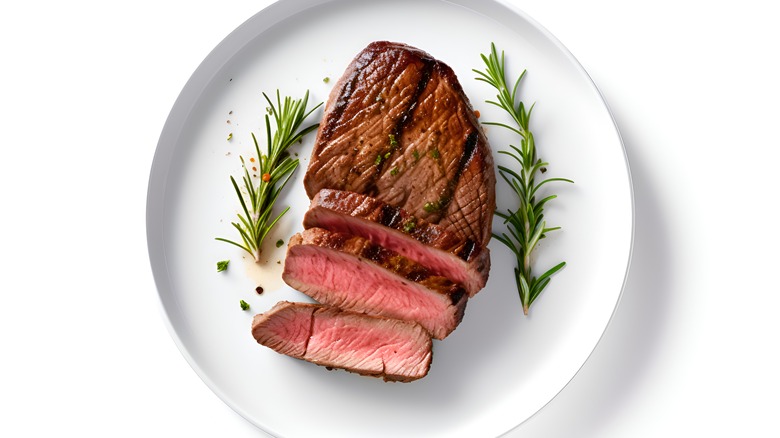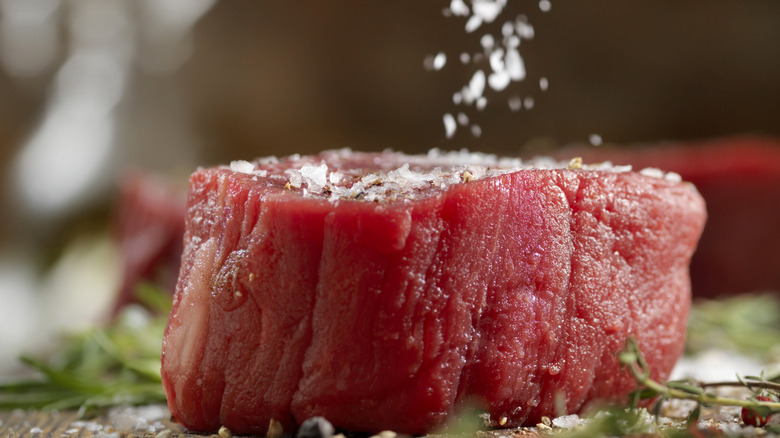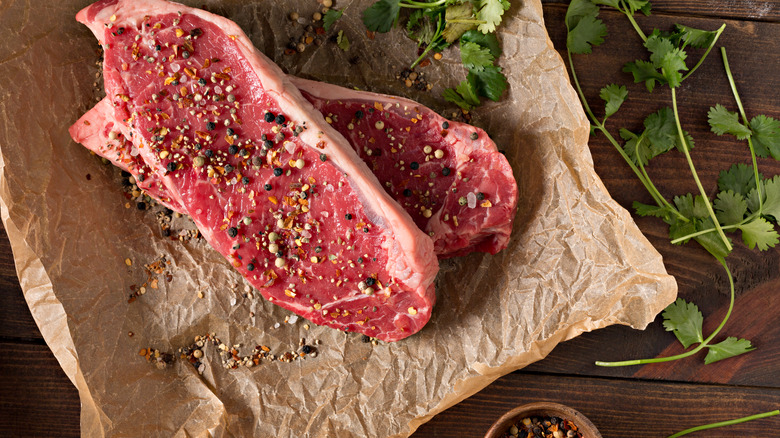Why You Need So Much Seasoning To Cook Steak To Perfection
Since it's not possible to season the inside of a steak, you have to compensate by adding a whole lot of salt, pepper, and other seasonings to the outside. Keep in mind, even marinating a steak or doing a dry brine for hours on end necessitates a massive amount of salt and other flavorings.
Most people would probably be shocked if they saw how much seasoning professional chefs use to coat steaks, with the meat literally covered in salt or other herbs. It might look like too much to the untrained eye, but the truth is, it's almost impossible to go overboard. Unlike with veggies or even chicken, there's really no such thing as over-seasoning a steak. The seasonings you sprinkle onto the steak before tossing it into the pan won't soak into the meat as it cooks. Instead, they'll form that beautiful crust that is very necessary for a delicious, beautiful steak.
The importance of salt
Using a lot of salt doesn't make a steak taste salty. Instead, it draws out the meat's natural flavor and makes it available for your tasting pleasure. When you're seasoning a steak, both sides should get a thin coating. In essence, if it has the right amount of salt it will look like there's way too much. That doesn't mean piling it on though — just a layer of salt will do.
Kosher salt works best. Apply it about half an hour before cooking the steak. You have to give the salt enough time to do its job, which is to draw out moisture that will, in turn, absorb the salt and then settle back into the meat. When it's time to cook, apply a second sprinkling of salt. It might seem like all of this will lead to an overly salty slab of meat, but it won't. Expect superb steak flavor instead.
If you plan on dry brining your steak, using pure salt is a great way to showcase the flavor. Leave the dry brine on the refrigerated meat for a minimum of three hours — though it's better to let it brine for a couple of days. This technique is especially helpful for thinner steaks that would otherwise lose their juices by the time the meat reached the desired temperature.
Go heavy on seasonings to flavor every bite
While the key to a properly seasoned steak is to start with salt, your work definitely doesn't end there. Extra seasonings are important for the mouthwatering sear that is required for any good steak. At the very least, pepper and garlic are essential. But not just any pepper. Fine pepper that is basically a powder won't do a steak justice. Instead, use a coarse black pepper. If it's freshly ground, that's even better. Dried minced garlic is also ideal, but you can use garlic powder in a pinch.
Other seasonings that go well with steak include onion salt or onion powder, dried coriander, smoked paprika, and cayenne pepper. Apply them all liberally so that the flavor will come through in each bite since under-seasoned steak can be a huge disappointment. Fortunately, it's easy to prepare chef-level steak at home by letting go of any fear of over-seasoning.


